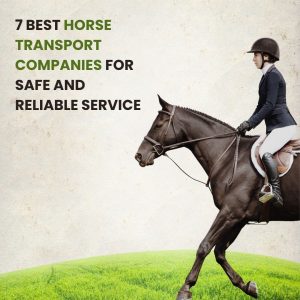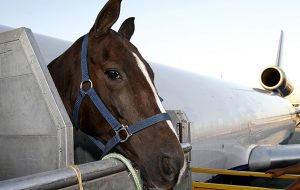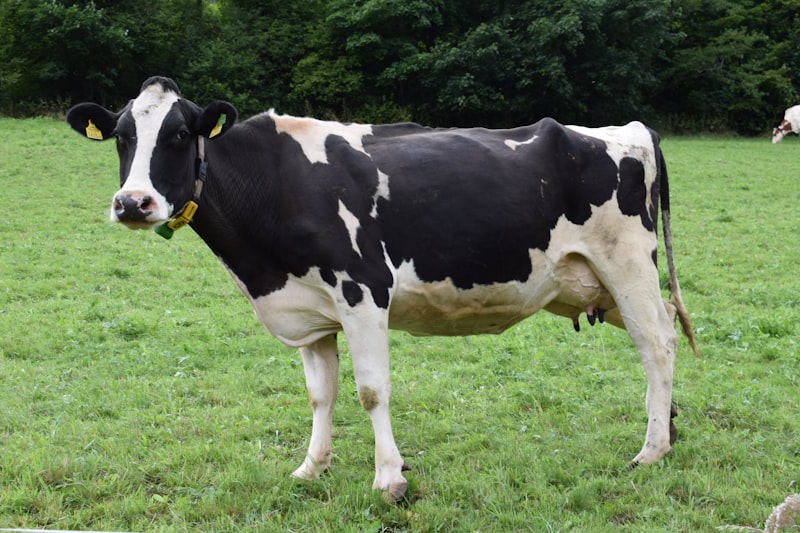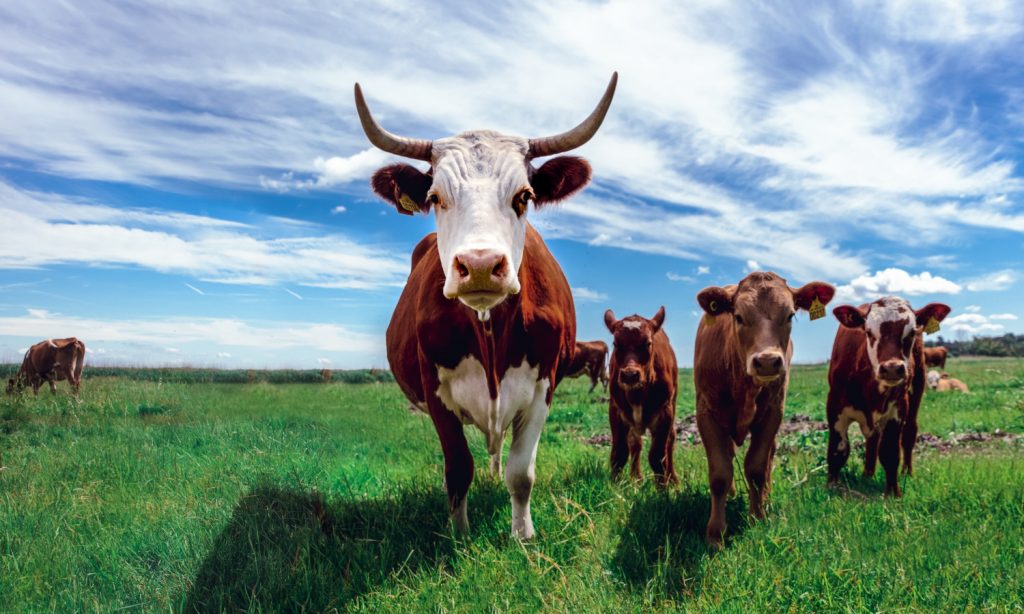7 Best Horse Transport Companies for Safe and Reliable Service

For many horse owners, ensuring the safe and efficient transport of their beloved animals is a top priority. In addition to being pets, horses serve as work partners, businesses, and even members of the family. For horse transport companies that want to move horses across the country or around the world, safety, comfort, and efficiency are very important. Instead of just picking the right transporter, the whole process can be made easier and safer by using up-to-date fleet management and animal monitoring tools.
If you’re looking for horse transportation services and tools to help you manage them successfully, this article will cover seven of the greatest firms in the United States that you may rely on with your horses, as well as crucial services to improve your transportation experiences.
The Importance of Choosing a Reliable Horse Transport Company
Horse transport requires responsibility. Always prioritize horse safety, comfort, and wellness when traveling locally or overseas. Horses are pets, performers, and investments. Good horse transport companies ensure your horse feels taken care properly during the trip.
A competent transport company will have well-maintained vehicles, skilled drivers, and enough insurance to secure your horse in an emergency. Additionally, they will be committed to strict health, nutrition, and rest practices to guarantee that your horse is in perfect state upon its arrival. Reputable firms eliminate extended journey stress, injury, and disease and ensure a safe, enjoyable voyage for your horse.
Modern fleet management and animal monitoring systems may increase horse transport security and productivity in addition to using the right firm. These devices monitor your horse’s status in real time, ensuring peace of mind for customer and companies with quick fixing of issues.
Factors to Select a Horse Transport Company
Choosing the correct horse transportation provider depends on careful examination for multiple factors to guarantee that the path your horse takes is as safe and pleasant as possible. These are the primary factors to consider:
- Experience and Reputation:
Select the company with a solid history and favorable client comments. Expert transporters are better suited to keep your horse safe and manage unexpected situations. - Insurance Coverage:
Make sure the company provides responsibility and mortality insurance among other extensive insurance policies. This will guard your finances if an accident or injury arise while transportation. - Vehicle Quality:
The transportation carriers must be maintained in good condition, have air-ride suspension, and give enough room for your horse to relax down, stand, and walk easily. - Health and Safety Protocols:
For health checkups, feeding, watering, and resting the horses during the travel, the company must strictly follow standards. If the journey be extensive, they should also offer layover facilities. - Tracking and Communication:
Choose a company that keeps open contact with you throughout the trip and provides GPS tracking. Peace of mind relies on real-time changes on the location and condition of your horse. - Special Services:
Your needs will determine whether you need more services including private charter, overseas shipping, or emergency travel. Make sure that the company you’ve selected can meet the requirements. - Cost:
Although cost is a major consideration, it shouldn’t be the only one guiding decision. Your horse’s security and comfort come first, hence even if a company provides excellent service at a greater cost, it is well worth considering them.
Examining these factors will help you choose a best horse transport company that will give your horse a secure, dependable, and comfortable experience as well as yourself.
Best Horse Transport Companies
Choosing a trustworthy organization is absolutely essential for ensuring the safety and comfort of your horse during travel. Seven of the best horse transport companies in the business are listed below; each provides special solutions and services to satisfy horse owners’ desires.
- uShip
Best For: Local and Affordable Transport
Overview:
uShip provides a handy approach to evaluating quotations and choosing the best solution for local transportation requirements by matching consumers with a range of horse transport companies. uShip is a great tool for rapidly and affordable priced transportation service research.
Services:
- Insurance Coverage: Yes
- Door to Door Service: Yes
- Private Charter: Yes
- Tracking: Yes
- International Shipping: Yes
Limitations:
Not a Transport Company: As a platform, uShip only connects clients and transport firms, which may result in users dealing with many different providers and less consistent communication.
Improvement Area:
- Fleet Management Solutions:Integrating our fleet management systems will help operations, delivering a more uniform and efficient service by combining all logistics in one location.
- Equine Express
Best For: Domestic Ground Transportation
Overview:
Equine Express is a prominent ground horse transport company in the United States, identified by its great client service and air-ride vehicles that are equipped with box stalls. They provide consumers with reliable transportation from coast to coast, with an emphasis on safety and comfort.
Services:
- Insurance Coverage: Yes
- Door to Door Service: Yes
- Private Charter: Yes
- Tracking: Yes (GPS-enabled)
- International Shipping: No
Limitations:
- Limited Layover Facilities: Limited Layover Facilities: The company can face difficulties with cross-country transportation in the case of delays, as there is only one existing layover location in Texas.
Improvement Area:
- Animal Monitoring Solutions:The implementation of our animal monitoring systems can reduce risks through long journeys by assuring real-time health monitoring for horses, particularly during enlarged layovers.
- EquiJet
Best For: International Transport
Overview:
EquiJet specializes in international horse transportation, managing all the necessary health checks, quarantine, and documentation for seamless overseas shipping. They work with experienced airlines and ground transport companies to ensure the highest standards of care.
Services:
- Insurance Coverage: Yes
- Door to Door Service: Yes
- Private Charter: No
- Tracking: No
- International Shipping: Yes
Limitations:
- Animal Monitoring Solutions:Lack of Tracking: International transportation may be greatly impacted by the incapability of customers to monitor their horse’s behavior in real time.
Improvement Area:
- Livestock Load Board & Community: EquiJet can improve schedules and logistics management by connecting with our Livestock Load Board & Community. Our fleet management system and animal monitoring solutions can give them real-time tracking ability they don’t currently have.
- Brook Ledge Horse Transportation
Best For: Horse Show Transport
Overview:
Both domestic ground transportation and international air travel to Canada are provided by Brook Ledge Horse Transportation in collaboration with C&E Horse Transport. They are an ideal choice for shipping horses to important exhibitions and gatherings all around North America.
Services:
- Insurance Coverage: Yes, $5000 mortality insurance
- Door to Door Service: Yes
- Private Charter: Yes
- Tracking: Yes
- International Shipping: Yes (to Canada)
Limitations:
- Limited Routes: Brook Ledge offers a relatively small number of routes, which may not be sufficient to meet the demands of every customer, particularly for less prominent locations.
Improvement Area:
- Fleet Management Solutions:Brook Ledge can enhance fuel productivity, extend its service area, and plan routes more effectively by using our fleet management system.
- Elite Horse Transportation
Best For: Last Minute and Emergency Transport
Overview:
Elite Horse Transportation is recognized for its quick responding to urgent and last-minute transportation demands. With a focus on safety and client satisfaction, they provide services throughout the United States and Canada from its bases in Kentucky, New York, and Virginia.
Services:
- Insurance Coverage: Yes, $1000 mortality insurance
- Door to Door Service: Yes
- Private Charter: Yes
- Tracking: Yes (GPS-enabled)
- International Shipping: Yes (to Canada)
Limitations:
- High Deposit Requirements:Some clients may find it difficult to deposit the minimum required 50% of their total amount.
- No Hay Provided: It can be unpleasant for customers to have to bring their own hay.
Improvement Area:
- Fleet Management & Animal Monitoring Solutions: Elite may use our fleet management system to streamline their operations and decrease expenses, while our animal monitoring systems could provide superior care during transportation, making their service more valuable to clients.
- American Horse Transportation
Best For: Nationwide Transport
Overview:
In the United States, American Horse Transportation provides full coast-to-coast services. With an emphasis on comfort and care, they offer both individual and group rides. They are prominent for their skilled staff and well-maintained fleet.
Services:
- Insurance Coverage: Yes
- Door to Door Service: Yes
- Private Charter: Yes
- Tracking: Yes
- International Shipping: No
Limitations:
- No International Shipping:Limited to local routes, which may not suit the needs of consumers who require international transportation.
Improvement Area:
- Animal Monitoring Solutions: Using our monitoring systems might guarantee ideal horse health throughout long-distance transport, increasing consumer trust in their service.
- Nationwide Horse Transportation
Best For: Long-Distance Hauls
Overview:
With years of experience, Nationwide Horse Transportation can transport horses across the United States over large distances. Their skilled personnel, well-maintained supplies, and reliability have gained customer’s trust.
Services:
- Insurance Coverage: Yes
- Door to Door Service: Yes
- Private Charter: Yes
- Tracking: Yes
- International Shipping: No
Limitations:
- No International Shipping: Like American Horse Transportation, this company is limited to domestic services.
Improvement Area:
- Fleet Management Solutions: Nationwide might improve their long-distance routes, lower operating expenses, and raise service standards by implementing our fleet management solutions.
Conclusion
Selecting the best horse transport provider is basically the first step. You may select the best service with a livestock load board & community and make sure your horses are carried securely, effectively, and with the utmost care by combining cutting-edge fleet management and animal monitoring systems. These systems provide peace of mind to both horse owners and transport companies by streamlining the shipping procedure.





